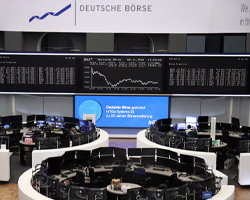Markets React to Dovish Fed Signals, Economic Data, and Central Bank Divergence | Daily Market Analysis

Key events:
- China - Manufacturing PMI (Nov)
- Eurozone - CPI (YoY) (Nov)
- USA - Core PCE Price Index (YoY) (Oct)
- USA - Core PCE Price Index (MoM) (Oct)
- USA - Initial Jobless Claims
- USA - Pending Home Sales (MoM) (Oct)
On Wednesday, US stocks experienced an uptick, spurred by dovish remarks from a prominent Federal Reserve official that fueled expectations of the central bank concluding its rate-hiking cycle. The Dow Jones Industrial Average advanced by 75 points (0.2%), the S&P 500 saw a 28-point increase (0.6%), and the NASDAQ Composite climbed by 120 points (0.9%).
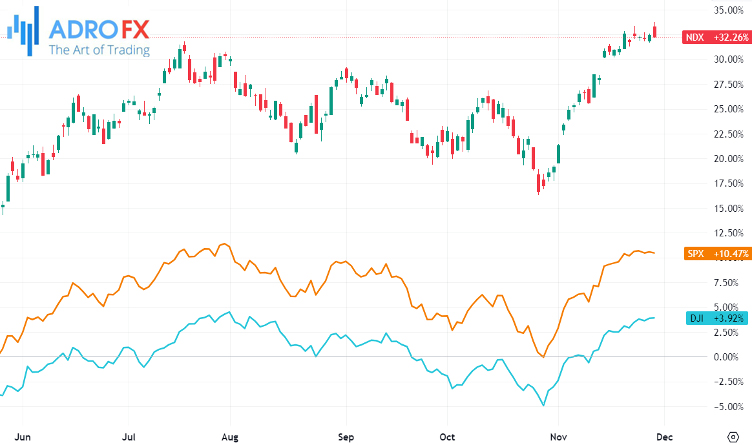
Sentiment received a boost from comments by Federal Reserve Governor Christopher Waller, traditionally recognized for a hawkish stance, who indicated on Tuesday that the central bank's monetary policy is well-positioned to address inflation. Waller suggested that if inflation continues its descent to the Fed's 2% target over the next few months, there's a possibility of officials considering interest rate reductions.
Headline inflation in the US decelerated more than expected to 3.2% in October. The upcoming release of the Fed's preferred inflation measure, the personal consumption expenditures price index, is anticipated to show a 0.1% increase in November, down from 0.4% in September. The core reading, excluding food and fuel costs, is projected to rise by 3.5% year-over-year, a decrease from the prior month and the lowest since mid-2021.
Positive market sentiment was further fueled by news that the US economy grew faster than initially reported in Q3, with gross domestic product increasing at a revised annualized rate of 5.2%.
According to the Federal Reserve's Beige Book, economic activity slowed since the previous report, with demand for labor easing and price increases moderating.
In Europe, the DAX outperformed, reaching its highest level since August 2nd, boosted by a strong showing in the auto sector following an upgrade from JPMorgan for BMW and positive remarks for Mercedes.
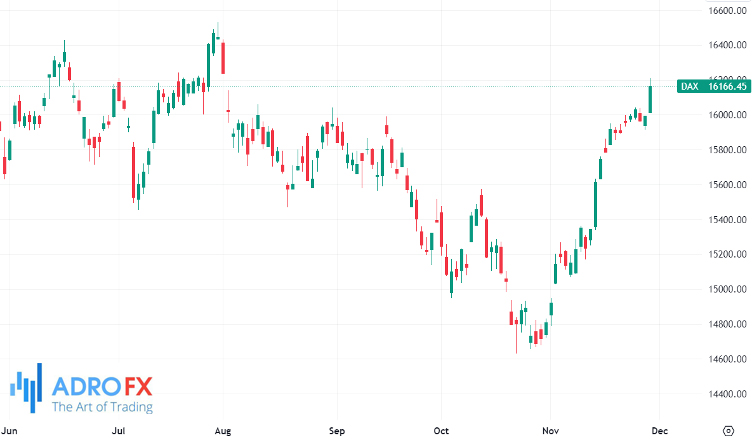
However, the FTSE100 underperformed due to weaknesses in energy and financials, influenced by the downturn in Chinese markets impacting companies like HSBC, Standard Chartered, and Prudential.
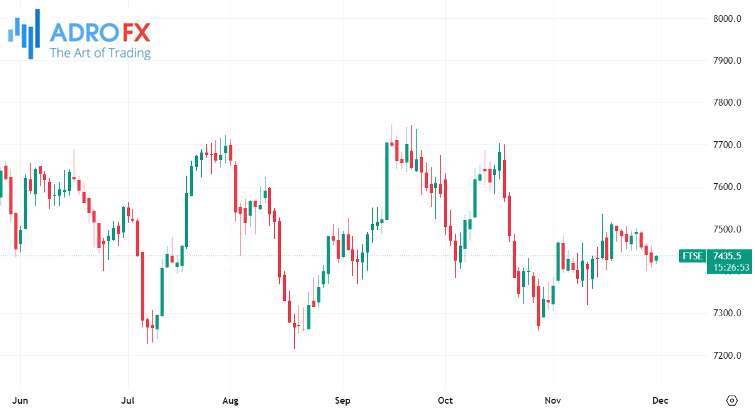
The New Zealand Dollar rallied against the US Dollar after the Reserve Bank of New Zealand meeting. While the RBNZ kept the Official Cash Rate unchanged, the Kiwi rose as RBNZ Governor Adrian Orr did not rule out further interest rate hikes if inflation remained elevated. This prospect of higher interest rates is considered bullish for currencies due to increased capital inflows.

The US Dollar Index showed modest growth, trading at 102.85 on Wednesday. The DXY gained traction from robust revisions in Q3 Gross Domestic Product figures and attracted interest with hawkish statements from Federal Reserve's Thomas Barkin, who did not rule out another rate hike in the current cycle.
The pound has demonstrated resilience, maintaining its strength following a positive uptick in October mortgage approvals, surpassing expectations at 47.4k compared to 43.7k in September. The decrease in mortgage rates from recent highs seems to be providing a slight boost to demand.
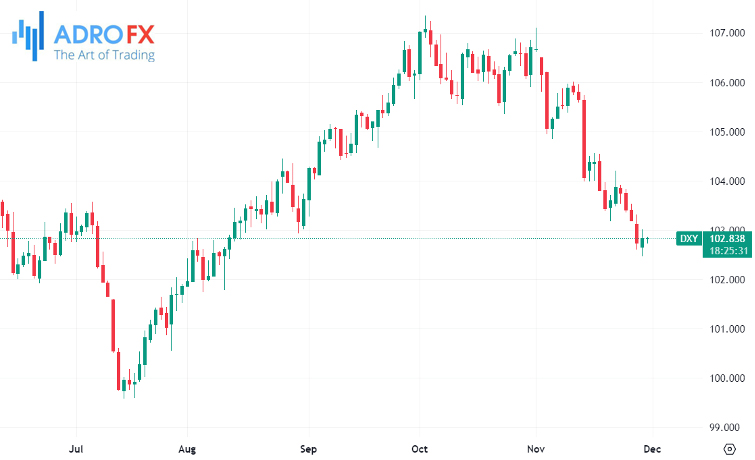
In contrast, the euro is experiencing some sluggishness, particularly after both German and Spanish flash Consumer Price Index (CPI) readings for November fell below expectations.

This trend reinforces the prevailing narrative that economic fragility, coupled with decelerating prices, is contributing to a wave of disinflation. Consequently, there is growing speculation that the European Central Bank (ECB) may find itself compelled to initiate rate cuts as early as the end of Q1 or the beginning of Q2 next year.


